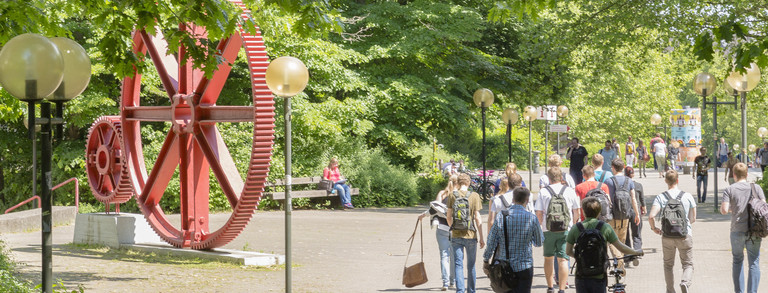Integrated Planning in Public Transport
- Mathematical Optimization
Coupling mathematical Optimization and stochastic Simulation for a robust and integrated Vehicle and Crew Scheduling in Public Transport
Background
Public transport is a substantial part of the traffic offered used by millions of people day in, day out. Passengers intending to reach their destination in a reliable, safe and convenient way by spending an appropriate amount of time and money. Based on these customer needs there are specific requirements concerning the offered quality and planning process in public transport.
The planning process in public transport comprises the preparation of transit route networks, timetables, and vehicle and crew scheduling. In practice, these schedules are built sequentially and evaluated individually. Therefore, there is no comprehensive evaluation of quality during the process. Furthermore, it is not possible to adequately consider potential disturbances of vehicles or traffic.
Vorgehensweise
The partial project TP2 is divided into four work packages:
- Analysis of the underlying logistic system,
- Mathematical Optimization,
- Stochastic Simulation,
- Coupling of Optimization and Simulation.
As a first step, the underlying logistics system needs to be analyzed. That is, the current practice of vehicle and crew scheduling and the subsequent disposition will be examined. Moreover, scenarios for tests and disturbances will be determined and assessment criteria and interfaces of coupling will be defined.
According to the system description the mathematical modelling, the development and implementation of optimization methods will be conducted. In order to obtain robust vehicle and crew schedules it is intended to rely on the concept of buffer times which will be determined in dependence on the stochastic simulation process. The simulation process again will be linked to the optimization by an appropriate coupling process. Due to the large complexity of the given problem it is required to develop special solution approaches by utilizing the individual structure of the problem.
Parallel to the above work of optimization, the logistical system will be transformed into a simulation model. In this process, the previously defined scenarios of disturbances, assessment criteria and interfaces of coupling will be considered. These tasks are summarized in the third working package.
In a final step, the solution of the mathematical optimization will be coupled with the stochastic simulation model by an iterative process. For a successful coupling it is necessary to identify the driver of the solution for a robust schedule set. Furthermore, a measure of robustness, as well as criteria for algorithm termination, needs to be defined.
Targeted results
In the long run, the research group “Integrated Planning in Public Transport “ aims to substitute the sequential planning process with an integrated approach for a customer-friendly and cost-efficient offer in public transport. In doing so, it is intended to consider disturbances in order to maintain a robust schedule set.
The research topic of the ITL is focused on the partial project TP2 “Coupling mathematical Optimization and stochastic Simulation for a robust and integrated Vehicle and Crew Scheduling in Public Transport”. The aim of this partial project is to develop models and solution approaches for integrated vehicle and crew scheduling in public transport allowing for potential disturbances. Thereby, the main focus is the development of an iterative approach that is able to couple optimization and simulation.
During the research project there will be a close collaboration with other intersecting partial projects of the Universities of Göttingen, Halle-Wittenberg, and Stuttgart, the Karlsruhe Institute of Technology and the RWTH Aachen.
Contact: Prof. Dr.-Ing. Uwe Clausen
Further Information
http://math.uni-goettingen.de/FOR2083
Funding and partners





